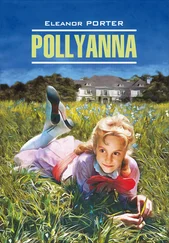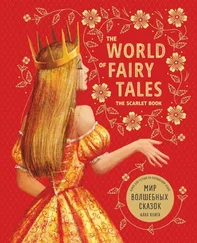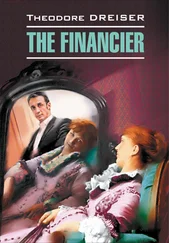“Isn’t that the typical American for you,” he heard a woman remark, at one of those large, very general court receptions to which so many are freely admitted, and to which Aileen had been determined to go. He was standing aside talking to an acquaintance he had made – an English-speaking Greek banker stopping at the Grand Hotel – while Aileen promenaded with the banker’s wife. The speaker was an Englishwoman. “So gaudy, so self-conscious, and so naïve!”
Cowperwood turned to look. It was Aileen, and the lady speaking was undoubtedly well bred, thoughtful, good-looking. He had to admit that much that she said was true, but how were you to gage a woman like Aileen, anyhow? She was not reprehensible in any way – just a full-blooded animal glowing with a love of life. She was attractive to him. It was too bad that people of obviously more conservative tendencies were so opposed to her. Why could they not see what he saw – a kind of childish enthusiasm for luxury and show which sprang, perhaps, from the fact that in her youth she had not enjoyed the social opportunities which she needed and longed for. He felt sorry for her. At the same time he was inclined to feel that perhaps now another type of woman would be better for him socially. If he had a harder type, one with keener artistic perceptions and a penchant for just the right social touch or note, how much better he would do! He came home bringing a Perugino, brilliant examples of Luini, Previtali, and Pinturrichio (this last a portrait of Cesare Borgia) [67] Perugino – Перуджино ( 1446—1524, настоящее имя Пьетро ди Кристофоро Ваннуччи ) , итальянский художник, представитель умбрийской школы; Luini – Луини, Бернардино ( 1480/90—1532 ) , итальянский художник; Previtali – Превитали, Андреа ( около 1480—1528 ) , итальянский художник; Pinturrichio – Пинтуриккьо ( 1454—1513, настоящее имя Бернардино ди Бетти ) , итальянский художник, представитель умбрийской школы
, which he picked up in Italy, to say nothing of two red African vases of great size that he found in Cairo, a tall gilt Louis Fifteenth standard of carved wood that he discovered in Rome, two ornate candelabra from Venice for his walls, and a pair of Italian torchères from Naples to decorate the corners of his library. It was thus by degrees that his art collection was growing.
At the same time it should be said, in the matter of women and the sex question, his judgment and views had begun to change tremendously. When he had first met Aileen he had many keen intuitions regarding life and sex, and above all clear faith that he had a right to do as he pleased. Since he had been out of prison and once more on his upward way there had been many a stray glance cast in his direction; he had so often had it clearly forced upon him that he was fascinating to women. Although he had only so recently acquired Aileen legally, yet she was years old to him as a mistress, and the first engrossing – it had been almost all-engrossing – enthusiasm was over. He loved her not only for her beauty, but for her faithful enthusiasm; but the power of others to provoke in him a momentary interest, and passion even, was something which he did not pretend to understand, explain, or moralize about. So it was and so he was. He did not want to hurt Aileen’s feelings by letting her know that his impulses thus wantonly strayed to others, but so it was. <���…>
It was during this period of social dullness, however, which somewhat resembled, though it did not exactly parallel his first years with his first wife, that Cowperwood finally met a woman who was destined to leave a marked impression on his life. He could not soon forget her. Her name was Rita Sohlberg. She was the wife of Harold Sohlberg, a Danish violinist who was then living in Chicago, a very young man; but she was not a Dane, and he was by no means a remarkable violinist, though he had unquestionably the musical temperament. <���…>
Rita Sohlberg was of the semi-phlegmatic type, soft, full-blooded, with a body that was going to be fat at forty, but which at present was deliciously alluring. Having soft, silky, light-brown hair, the color of light dust, and moist gray-blue eyes, with a fair skin and even, white teeth, she was flatteringly self-conscious of her charms. She pretended in a gay, childlike way to be unconscious of the thrill she sent through many susceptible males, and yet she knew well enough all the while what she was doing and how she was doing it; it pleased her so to do. She was conscious of the wonder of her smooth, soft arms and neck, the fullness and seductiveness of her body, the grace and perfection of her clothing, or, at least, the individuality and taste which she made them indicate. <���…>
A part of the peculiarity of her state was that Sohlberg had begun to disappoint Rita – sorely. <���…>
Life and character must really get somewhere to be admirable, and Harold, really and truly, did not seem to be getting anywhere. He taught, stormed, dreamed, wept; but he ate his three meals a day, Rita noticed, and he took an excited interest at times in other women. <���…>
Rita was not jealous of Harold any more; she had lost faith in his ability as a musician. But she was disappointed that her charms were not sufficient to blind him to all others. That was the fly in the ointment [68] the fly in the ointment – (разг.) ложка дегтя в бочке меда 4
. It was an affront to her beauty, and she was still beautiful. She was unctuously full-bodied, not quite so tall as Aileen, not really as large, but rounder and plumper, softer and more seductive. Physically she was not well set up, so vigorous; but her eyes and mouth and the roving character of her mind held a strange lure. Mentally she was much more aware than Aileen, much more precise in her knowledge of art, music, literature, and current events; and in the field of romance she was much more vague and alluring. She knew many things about flowers, precious stones, insects, birds, characters in fiction, and poetic prose and verse generally.
At the time the Cowperwoods first met the Sohlbergs the latter still had their studio in the New Arts Building, and all was seemingly as serene as a May morning, only Harold was not getting along very well. He was drifting. The meeting was at a tea given by the Haatstaedts, with whom the Cowperwoods were still friendly, and Harold played. Aileen, who was there alone, seeing a chance to brighten her own life a little, invited the Sohlbergs, who seemed rather above the average, to her house to a musical evening. They came. <���…>
Mrs. Sohlberg, he reflected shrewdly, had a kind of fool for a husband. Would she take an interest in him, Frank Cowperwood? Would a woman like this surrender on any basis outside of divorce and marriage? He wondered. On her part, Mrs. Sohlberg was thinking what a forceful man Cowperwood was, and how close he had stayed by her. She felt his interest, for she had often seen these symptoms in other men and knew what they meant. She knew the pull of her own beauty, and, while she heightened it as artfully as she dared, yet she kept aloof, too, feeling that she had never met anyone as yet for whom it was worth while to be different. But Cowperwood – he needed someone more soulful than Aileen, she thought.
Chapter XV
A New Affection
The growth of a relationship between Cowperwood and Rita Sohlberg was fostered quite accidentally by Aileen, who took a foolishly sentimental interest in Harold which yet was not based on anything of real meaning. She liked him because he was a superlatively gracious, flattering, emotional man where women – pretty women – were concerned. She had some idea she could send him pupils, and, anyhow, it was nice to call at the Sohlberg studio. Her social life was dull enough as it was. So she went, and Cowperwood, mindful of Mrs. Sohlberg, came also. Shrewd to the point of destruction, he encouraged Aileen in her interest in them. He suggested that she invite them to dinner, that they give a musical at which Sohlberg could play and be paid. There were boxes at the theaters, tickets for concerts sent, invitations to drive Sundays or other days.
Читать дальше












